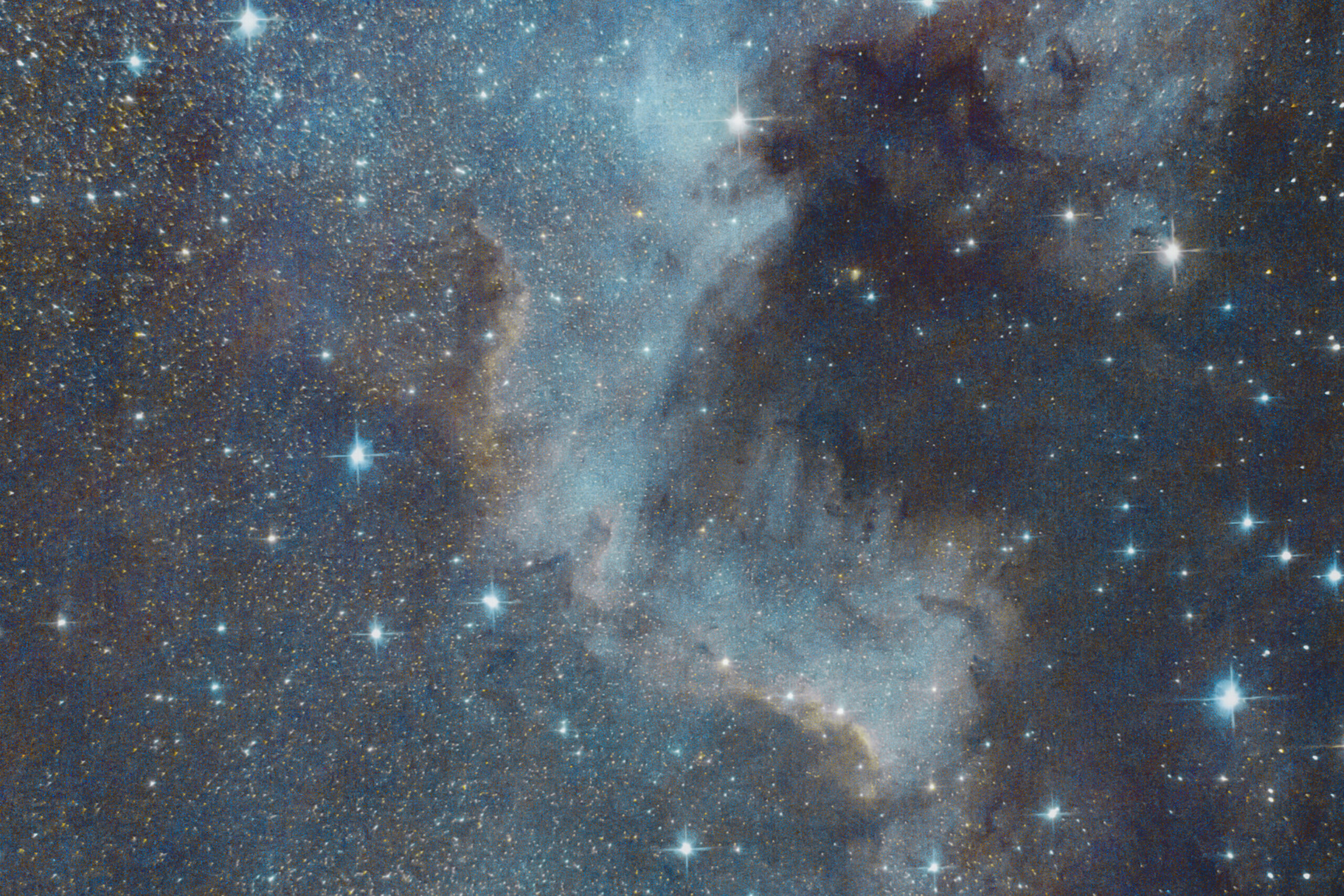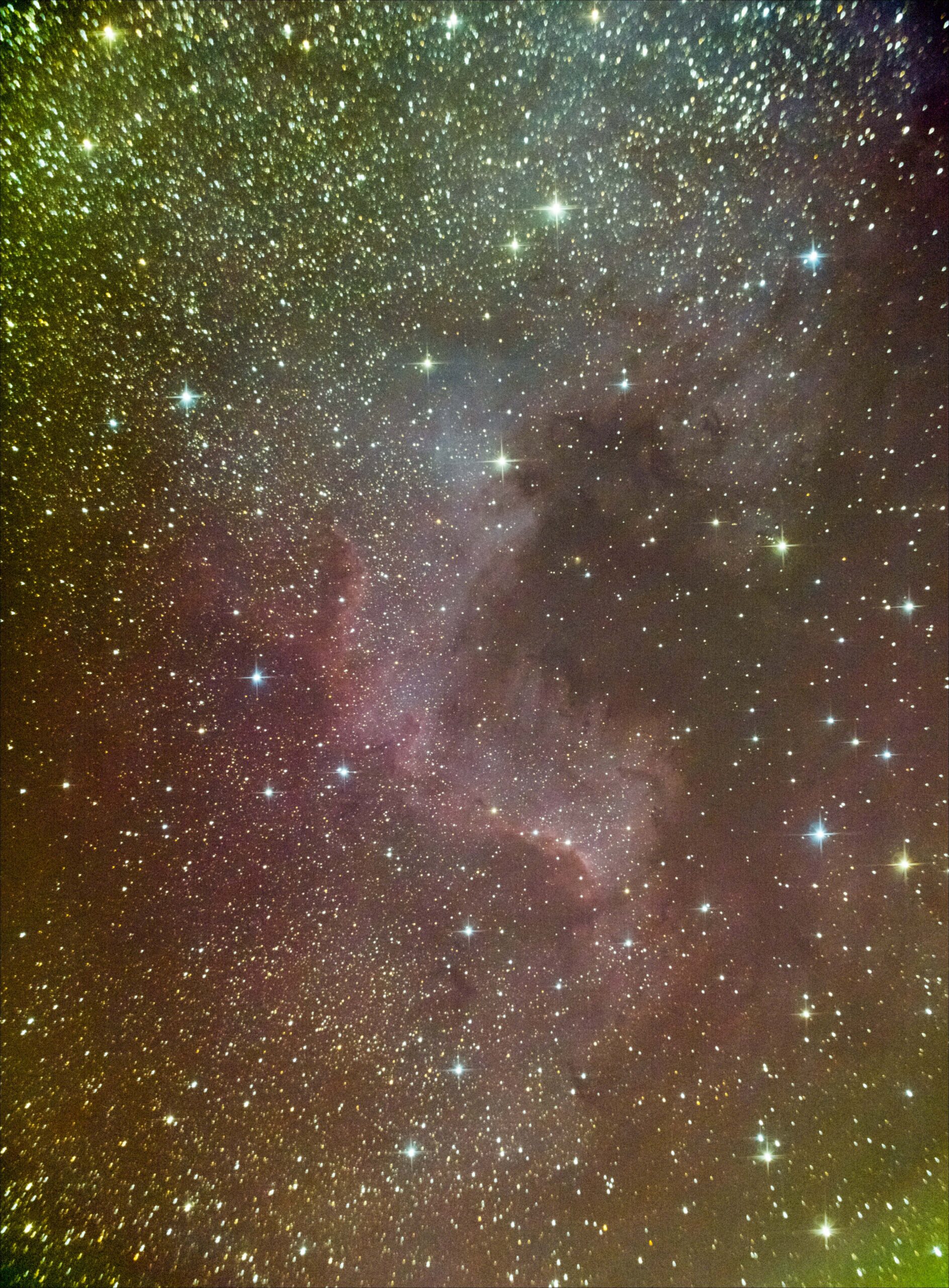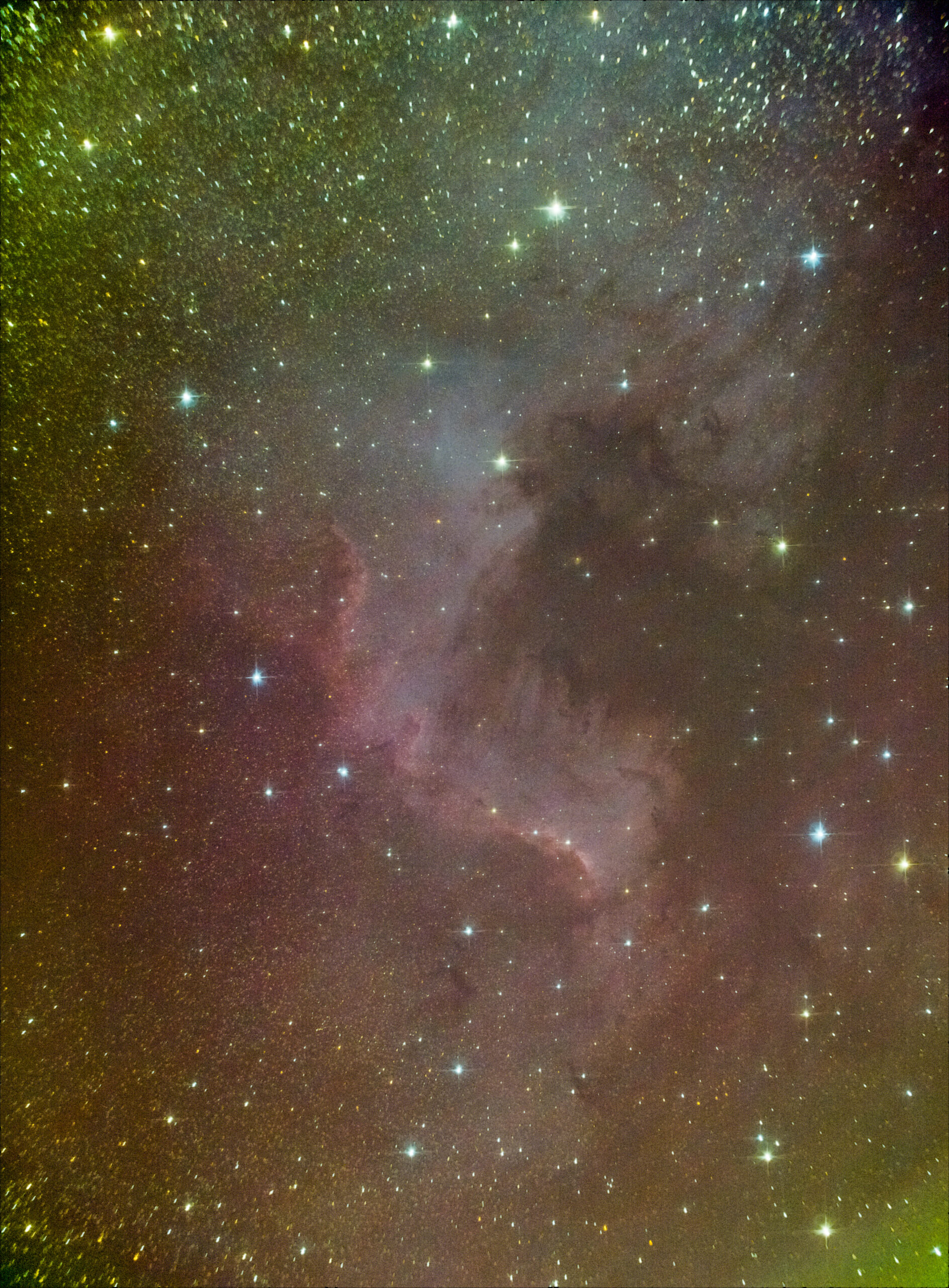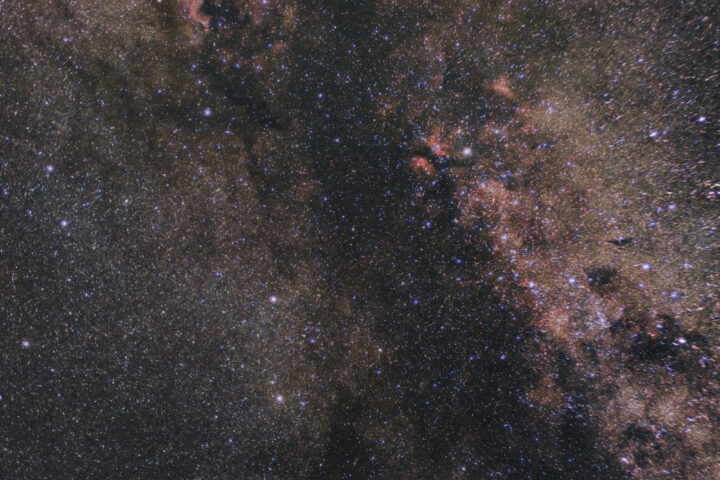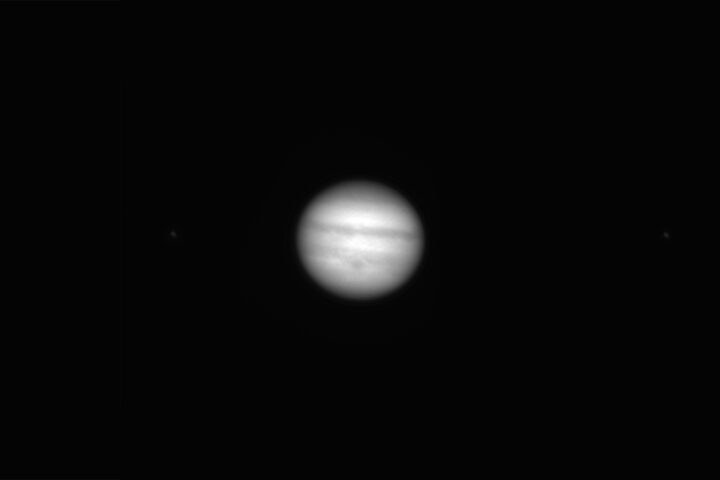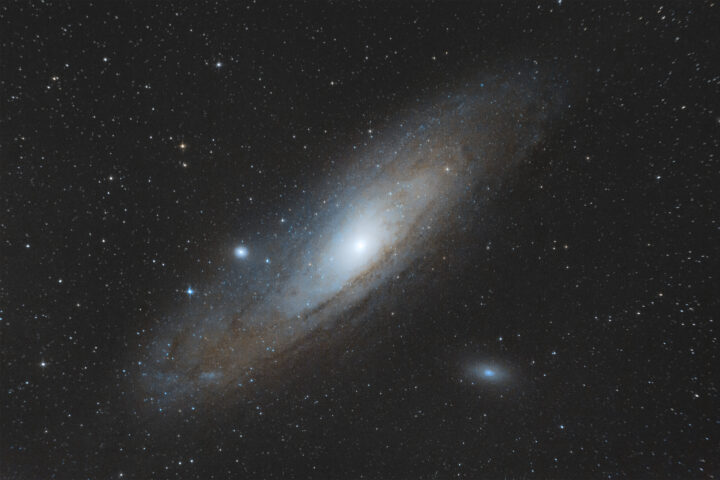9 July 2022: school ended. I could finally leave behind textbooks, homework and, most importantly, light pollution and prepare to 3 months of relax, swimming and late nights under relatively dark skies.
On July 7th, I decided to stay up until 2am and take the first deep sky image of the summer.
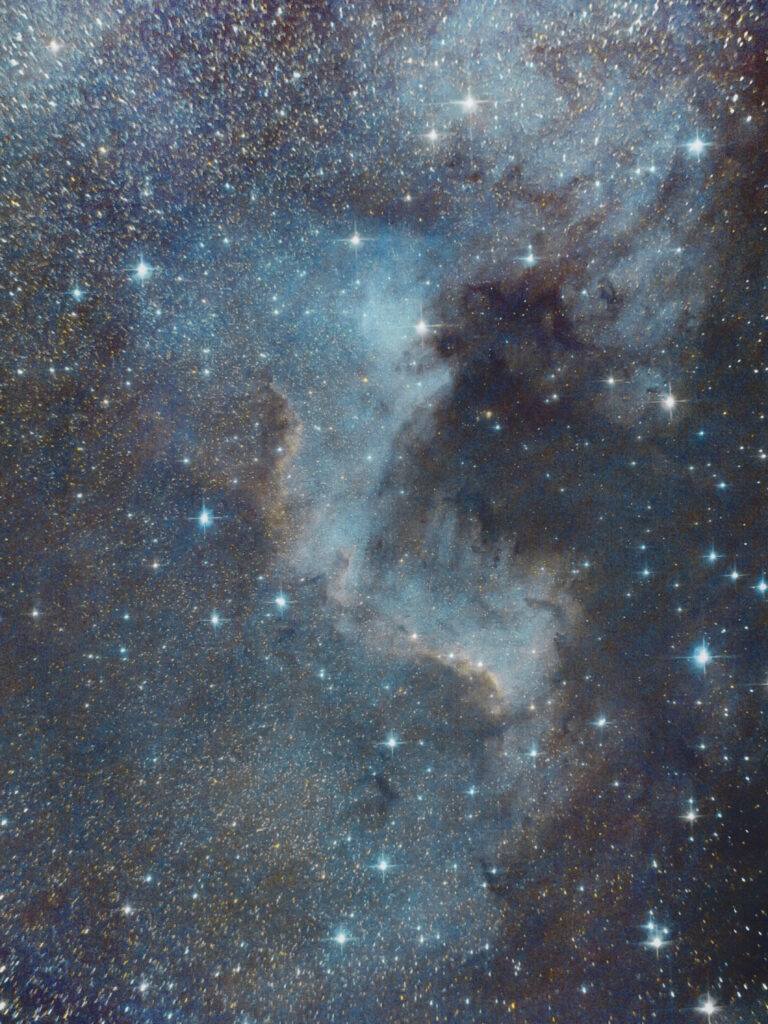
CAMERA: Olympus Pen F (unmodified)
TELESCOPE: SkyWatcher 130PDS + .71x reducer (~460mm f/3.5)
MOUNT: Skywatcher EQ-3 Pro Synscan
GUIDING: QHY5L-II monochrome + Celestron Firstscope 76
EXPOSURES: 45x180s unfiltered ISO 400
LIGHT POLLUTION: Bortle class 5
Acquisition
Despite it being the first night out with the 130PDS – Pen F imaging combo, everything went smoothly. It took some time to get everything set up in the garden, so I started imaging at around 11pm, but I was able to gather 48 exposures, of which I stacked 45 for a grand total of two and a quarter hours of integration.
The next day I also took flat frames, but I skipped darks and biases as I used dithering to remove hot pixels and the Pen F does not capture much dark current anyway.
Guiding was also exceptional: the total RMS always stayed below 1 arcsecond and there was zero star trailing in the frames. However, there are still a couple of issues with the stars.
First of all, I don’t have a coma corrector, so the stars at the corners of the image are not punctiform. Secondly, I don’t have a Bahtinov Mask or any other focusing aid, so the images may have been slightly out of focus and larger than expected.
Processing
You may be asking yourself: “Aren’t emission nebulas supposed to be red?”. Well, I was perplexed too when I saw that there are no hints of red in this image, so I investigated the data a bit. Here is the stacked image with a pretty aggressive stretch applied. I included both the normal version and one with star reduction.
As you can see, there is some red information in the center and bottom parts of the image, but there is none towards the top. This was the reason why Siril’s background extraction tool completely removed the red color typical of emission nebulosity.
I also looked at the raw files from the camera. There was not much nebulosity visible, so I concluded that the reds were simply too weak to be captured by my unmodified camera. I decided to stick with the “blue” image that came out of Siril, without trying to retrieve the reds manually.
After that it was just a matter of careful editing in Photoshop.
Conclusion
Shooting this target was a very pleasant experience. The setup worked perfectly all night without the need for my supervision and I really how the final image turned out, despite the imperfections. Can’t wait to spend more time imaging under the stars!
